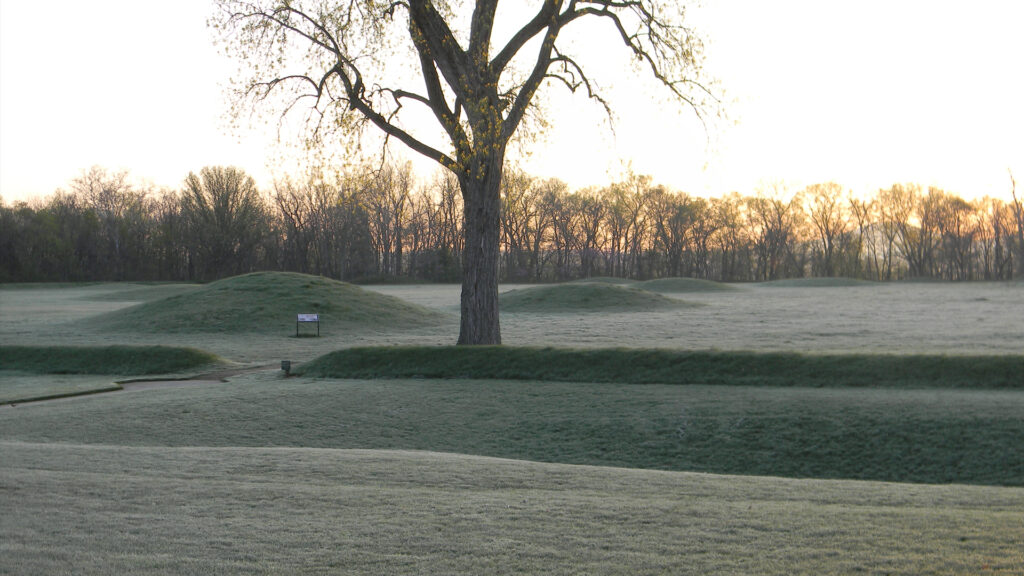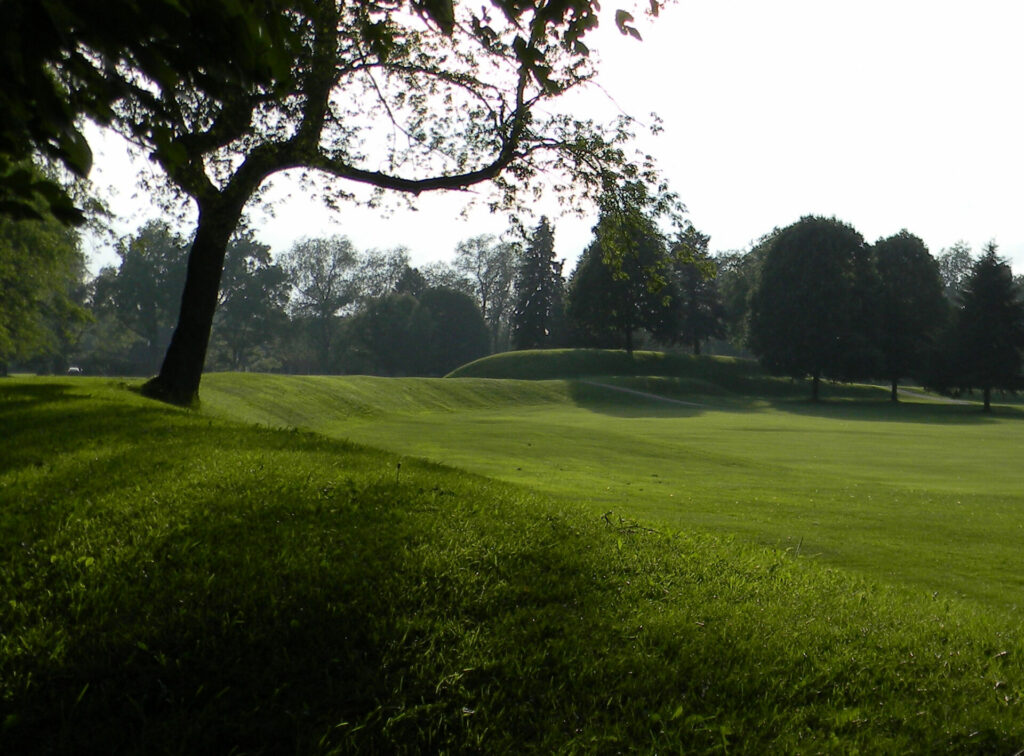In the eyes of the world, Ohio is the birthplace of aviation, the home of Neil Armstrong, and the mother of U.S. Presidents. And that vision is expanding to include Ohio’s incredible monumental earthworks built by ancient Native Americans well over a thousand years ago.
On September 19, the 21 countries on the UNESCO World Heritage Committee, a branch of the United Nations, issued their decision to inscribe the Hopewell Ceremonial Earthworks as the United States’ 25th addition to the World Heritage List and the first in the state of Ohio. This list is made up of cultural and natural sites across the world that are deemed to be of “outstanding universal value,” which are important across generations. Other examples of World Heritage sites include Stonehenge, Yellowstone National Park, Machu Picchu, and the Taj Mahal.
The Hopewell Ceremonial Earthworks, which include five locations managed by the National Park Service and three managed by the Ohio History Connection, were built by Native Americans between 1,600 and 2,000 years ago. They are complex masterpieces of landscape architecture and are exceptional among ancient monuments worldwide in their enormous scale, geometric precision, and astronomical alignments. The Hopewell Ceremonial Earthworks sites in Licking, Ross, and Warren counties are about eight sites telling a single story.

The National Park Service’s Hopewell Culture National Historical Park in Chillicothe includes the Mound City Group, the largest concentration of burial mounds attributed to the Hopewell Culture, Hopewell Mound Group, the largest of the enclosures and contains a perfect square, Seip Earthworks, one of the largest burial mounds, High Bank Works, which is currently closed to the public and is being actively researched for its astronomical alignments and precise geometric enclosures, and Hopeton Earthworks, another perfect circle and a square with parallel walls that lead down to the Scioto river.
The Ohio History Connection’s Great Circle Earthworks, an enormous circular enclosure that measures 1,200 feet across, and Octagon Earthworks, which is aligned to the rising and setting of the moon over its 18.6-year-long cycle, are in Heath and Newark, respectively, and Fort Ancient Earthworks & Nature Preserve, a three-and-a-half-mile expanse of walls that surround a blufftop, is in Oregonia.
The Hopewell Ceremonial Earthworks were nominated to the UNESCO World Heritage List in January 2022 by the U.S. Department of the Interior. However, the process to get to that point started back as early as the ’90s, with thousands of people helping along the way. Many Tribal Partners passed resolutions in support of the World Heritage project. This includes the Eastern Shawnee Tribe of Oklahoma, Shawnee Tribe, Miami Tribe, Wyandotte Nation, Seneca-Cayuga Tribe, Quapaw Tribe, Peoria Tribe, Ottawa Tribe, Pokagon Band of Potawatomi, and the Seneca Nation of Indians.
These tribes helped provide support, context, and feedback to help shape the experience that visitors will see at these sites. None of this is clearer than in the logo design.

The logo is representative of the earthworks themselves on many levels. The graded arches symbolize the earthworks both above and below the ground. The moon rises above them, representing the many lunar alignments found in the earthworks and the rhythm of nature that has been written in the land. Water features run along the base of the earthworks just as they once did thousands of years ago. Purple was chosen for the sky to symbolize a wise, revered, and maternal presence. Lastly, the typography mimics the circular nature of the icon. A nod to the shapes of many of the earthworks and their amazingly precise geometry.

When visitors come, they most likely will not know the effort that went into creating this experience and protecting these sacred sites. The hope, instead, is that whether they visit for a day, two days, or more, they will view these works as outstanding human genius that need to be seen in person and protected for generations to come. Feel a connection to our past and a better understanding of what it means to be human. When you visit a Hopewell Ceremonial Earthwork site, you will be a witness to ancient brilliance.
For more information on planning your trip, visit the hopewellearthworks.org.






